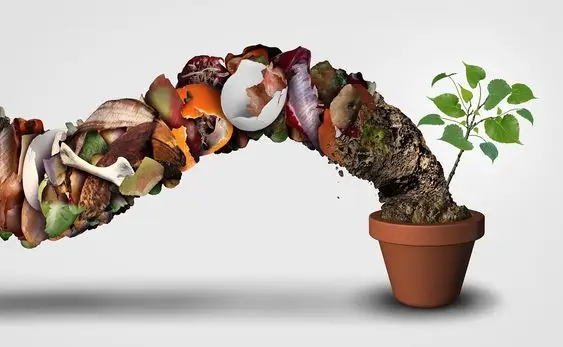Can You Use AMD GPUs with Intel CPUs? Exploring C…
April 14, 2018

Composting is a simple and effective way to reduce food waste and create nutrient-rich soil for your plants. It's an environmentally friendly practice that not only helps to reduce greenhouse gas emissions but also provides a cost-effective alternative to chemical fertilizers. In this article, we will guide you through the process of composting food waste, including what to compost, how to create a compost bin, and how to maintain your compost pile.
Composting is the natural process of breaking down organic matter, such as food scraps and yard waste, into a nutrient-rich soil amendment. It's a great way to reduce the amount of waste that goes into landfills, where it can contribute to the production of methane, a potent greenhouse gas. Composting can also help to reduce the need for chemical fertilizers and pesticides, as the finished compost provides a natural source of nutrients and beneficial microorganisms that can help to improve soil health.
Composting is a simple process that requires only a few basic materials. The first step is to collect your organic waste, which can include the following:
It's important to note that not all organic waste is suitable for composting. Avoid adding meat, bones, dairy products, and oily foods to your compost pile, as these can attract pests and slow down the composting process.
Once you have collected your organic waste, the next step is to create a compost bin. There are many different types of compost bins available, from simple DIY designs to more complex commercial models. Here's how to create a basic compost bin:
Once you have created your compost bin, the next step is to maintain your compost pile. Here are some tips to help you get the most out of your composting efforts:
Now that we have understood what composting is and the benefits it provides, let's dive into the steps involved in composting food waste.
There are several methods of composting that you can choose from. The most common ones are:
If you choose indoor composting, you will need a container that can hold your food waste. You can choose from several containers, including:
If you choose outdoor composting, you can use a compost pile or a compost bin. The bin can be made from wood, plastic, or metal.
The next step is to collect your food waste. You can collect any food waste, including fruit and vegetable scraps, coffee grounds, tea bags, eggshells, and more. However, it is important to avoid meat, dairy, and oily foods as they can attract pests and slow down the composting process.
To speed up the composting process, you need to add bulking agents. These are materials that help to create air pockets in the compost, which is essential for the microbes to break down the waste. Some common bulking agents include shredded paper, dried leaves, straw, and wood chips.
To ensure that the compost remains moist, you need to add water regularly. The compost should feel damp, like a wrung-out sponge. However, be careful not to add too much water as it can cause the compost to become waterlogged and slow down the composting process.
Turning the compost helps to mix the materials and add air, which is essential for the microbes to break down the waste. If you are using a compost bin, you can use a pitchfork or a compost aerator to turn the compost. If you are using a compost pile, you can use a shovel.
After a few months, your compost should be ready to use. The compost should be dark, crumbly, and have a earthy smell. You can use the compost in your garden, flower pots, or indoor plants.
Composting is a simple and effective way to reduce food waste and create high-quality compost for your plants. By following the above steps, you can easily compost your food waste and contribute to a healthier planet. Remember to be patient and consistent in your composting efforts, and soon you will be reaping the rewards of your composting efforts.
Comments
Write a comment